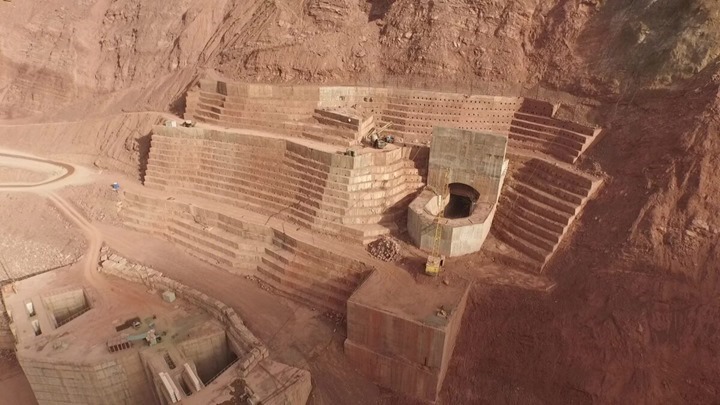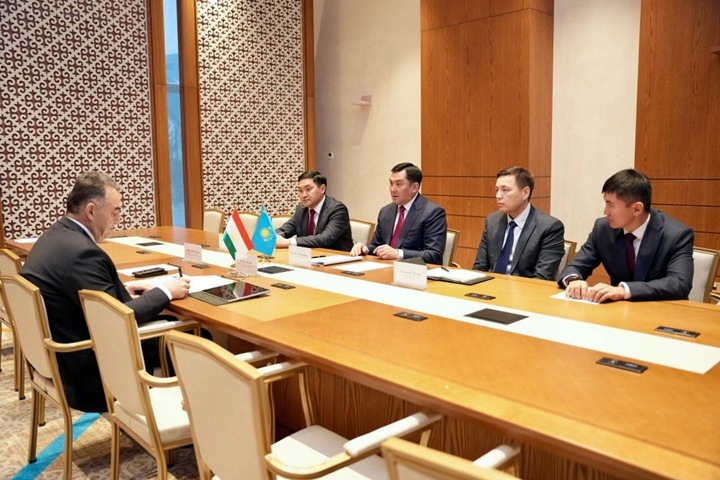The Rogun Dam, located on the Vakhsh River in Tajikistan, is one of the most ambitious hydropower projects in the world, let alone in Central Asia. Designed to be the world’s tallest dam, with a projected height of 335 meters (1,099 feet), it is poised to transform Tajikistan’s energy landscape by providing an estimated output of 13.1bn kWh, with a total capacity of 3,600 MW.

About 90 percent of energy in Tajikistan is created through hydropower, with the Nurek hydroelectric power station (opened in 1980) producing 11.4 bln kHw — almost half of all electric power produced in Tajikistan.
Tajikistan’s energy sector has been in a state of crisis for years now. This crisis is due mainly to aging power generation assets, many of which have not been modernized since the collapse of the Soviet Union in 1991 ,as well as added pressures due to climate change. Given that so much of Tajikistan’s energy generation is driven by hydroelectric power, decreasing water levels due to shrinking glaciers and other climate pressures are causes for concern.
In 2020, Tajik officials released a statement notifying residents that there would be electricity use limits and outages throughout the country, largely because “the volume of water in the country’s largest river Vakhsh had fallen by 50 percent. As a result … the water level of the Nurek reservoir, had fallen by 17 metres compared to 2019.” This decrease in water meant the Nurek Dam was unable to meet the country’s electricity needs.
These limitations on energy consumption have become an annual event in Tajikistan, especially during winter. Despite the decreased water levels, Emomali Rahmon, the Tajik president, maintains that “with the construction of Rogun Dam, we are not only resolving the problems with electric energy for the population, but we are also creating a solid basis for the development of various spheres of economy.”
Construction of the Rogun Dam started in 1976, but it was stopped due to political and funding challenges. As of November 2018, 75 of the total 335 meters had been built, and one turbine of six is in operation. Officials estimate that, with proper funding, the dam could be fully completed by 2028.
China’s expanding role in Central Asia
China’s growing influence in Central Asia is part of its larger Belt and Road Initiative (BRI) strategy, wherein it is seeking to expand infrastructure and trade links between China and various regions of the world. Tajikistan, as a strategically important landlocked country bordering China, is a key partner in the BRI framework. This relationship is underpinned by Chinese investments in infrastructure, mining, and hydropower.
China’s involvement in the Rogun Dam project is driven by its geopolitical interests, desire to secure stable energy supplies, and strategic influence over Central Asian infrastructure.
Building the Rogun Dam requires vast financial resources. When the project first resumed in 2008, officials estimated the overall cost would be about USD 3 billion, but this amount has ballooned over the years to over USD 9.7 billion total. For a country like Tajikistan, whose economy is relatively small and reliant on remittances, this is a monumental expense. So far, Tajikistan has already spent USD 3.3 billion on the project but still lacks at least USD 6.4 billion to finish building the dam, according to estimates made in August 2024. During the last decade, the projected costs of completing the Rogun Dam have increased by 15 percent annually.
Chinese banks and investment institutions have become key financiers of infrastructure projects across Central Asia, including Tajikistan. Chinese funding has supplemented Tajikistan’s efforts to finance the dam, either through direct investments or loans to Tajikistan’s government.
Chinese investment in the Rogun Dam Project
China’s influence on the Rogun Dam project is part of its broader strategy to increase its presence in Central Asia. While Tajikistan is the main driver of the project, Chinese financial resources, technical expertise, and geopolitical interests have had a significant impact on its development.
It’s noteworthy that, even as China seeks to strengthen its ties in Central Asia, the scale of Chinese financing is very limited compared to other investors in the dam. According to an analyst who spoke to Global Voices on condition of anonymity, “Chinese actors tend to avoid investment in controversial projects.” While Chinese companies have previously explored hydroelectric projects in Tajikistan, most of these efforts were abandoned to appease downstream Uzbekistan, which could see its water supply suffer if the upstream rivers are dammed, thereby hindering its cotton industry. Criticism from environmental groups is also spooking further Chinese investment.
But money isn’t the only way China is supporting the project. China’s contribution to the Rogun Dam project is also evident in its technical assistance and engineering expertise. Chinese companies have established a dominant presence in Central Asian infrastructure development, including hydropower projects. Chinese engineers, contractors, and firms bring expertise that is critical for the construction of such a massive and complex project as the Rogun Dam.
But China has its own motivations for supporting the effort, despite the controversy.
While Tajik officials hope the dam will be able to solve its electricity crisis, they also are looking to their energy-starved neighbors as potential customers for the surpluses energy that is produced. Uzbekistan, Afghanistan, and Pakistan are especially attractive options that would benefit from a reliable, sustainable energy source. In securing water and electricity resources through Central Asia, China is indirectly supporting its broader regional water and energy interests, as well as ensuring the stability of energy supplies that feed into its Belt and Road Initiative.
Environmental and social implications
Even as the Rogun Dam promises considerable economic and energy benefits, its environmental and social impacts are significant, and China’s involvement further complicates the equation.
Environmental activists report that over 7,000 people have already been displaced from the reservoir zone, and it is estimated that some 38,000 more are going to be further resettled to other regions of Tajikistan. However, this displacement was not without controversy. There were complaints that governmental compensation was not enough to buy a new house in the area of relocation.
Moreover, activists also raise concerns about mismanagement and lack of financial transparency in the construction of the dam. It was reported that, five years ago, one of the dam’s power generators stopped working. In an interview with the analytical site Cabar.asia, a Tajik energy expert says that poor-quality cement, reinforcements, and other low-quality building materials have been used during the construction. Moreover, environmental activists say there has been a lack of transparency surrounding the construction and point out the high levels of corruption in Tajikistan, and the lack of public discussions of the project amid longstanding suppression of human rights in the country.
Environmental activists have also expressed fears that the dam will disrupt the natural flow of the Vakhsh River, affecting biodiversity and agriculture in downstream areas.
China’s track record on environmental considerations in infrastructure projects has been mixed. While Chinese investment brings much-needed funding, it also raises concerns about environmental oversight and long-term sustainability. Some critics argue that Chinese-backed infrastructure projects often prioritize economic gains over environmental protections, exacerbating the negative consequences of large-scale dams.
As the Rogun Dam nears completion, the balance of these factors will shape the future of Tajikistan’s energy landscape and its relationship with China. The dam represents not only a milestone in Tajikistan’s development but also a microcosm of the broader dynamics shaping Central Asia’s integration into China’s Belt and Road Initiative.






Leave a Reply